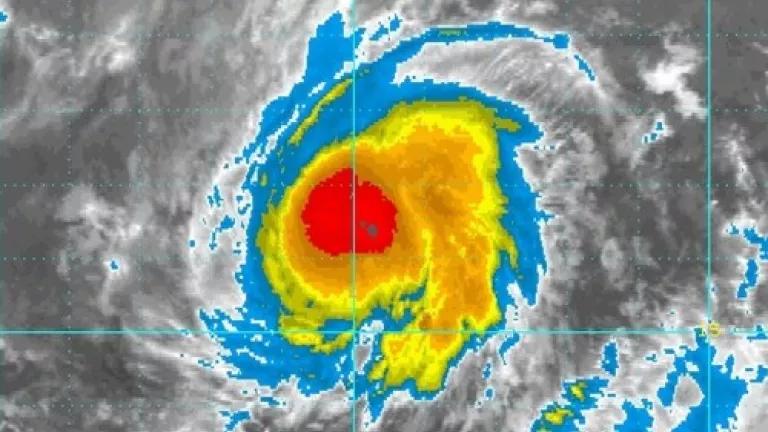
June 1st marks the official beginning of the Atlantic hurricane season in the U.S. This year is predicted to be a relatively calm season, with the expected number of named storms, hurricanes, and major hurricanes predicted to be below the average for the past 34 years. But that doesn't mean folks on the East and Gulf Coast are in for a quiet year. Predictions are not perfect, nor would the scientists that make them suggest they are. The fact is some of the nation's worst years for hurricanes have occurred when relatively average years were predicted.
NOAA Image, GOES satellite image of Hurricane Henriette, August 7, 2013.
In 2005 the predictions were for a slightly above-average year, but there were twice as many as predicted. There were 15 total hurricanes with seven major hurricanes including Katrina, Rita, and Wilma, which ravaged coastal communities in Louisiana, Mississippi, Texas, and Florida, causing a combined $196 billion in damages.
In 2012, the predictions were also for a relatively quiet season, and it was shaping up to be just that. Only two hurricanes made landfall in the U.S that year (a third, Leslie, made landfall in Newfoundland). In August Hurricane Isaac struck, causing $2.35 billion in damage in the Gulf. As October neared an end, it looked a very quiet season, but then Superstorm Sandy landed. Even without hurricane strength winds, it paralyzed the Mid-Atlantic and New York City for weeks and caused an estimated $67 billion in damage.
|
2015 Predicted |
||||
|
Tropical Storms |
7 |
12.0 |
13/27 |
10/19 |
|
Hurricanes |
3 |
6.5 |
7/15 |
4/10 |
|
Major Hurricanes |
1 |
2.0 |
3/7 |
2/2 |
As the climate continues to warm, hurricanes are expected to change as well. While there are some unknowns about exactly how hurricanes will be affected by warming temperatures, it's generally agreed that hurricanes will drop more rain and that major hurricanes will become more likely.
We've been relatively lucky as of late. Since Sandy, the nation has not experienced a tropical storm or hurricane that has caused in excess of $1 billion in damages. But we may be overdue. The State of Florida has not seen a major hurricane in about a decade, perhaps the longest period the state has ever gone without a major storm.
The U.S. should not wait for the next Katrina or Sandy to hit our shores before we take the steps necessary to safeguard our communities. The science is clear -- our shorelines are increasingly vulnerable. A recent study by the National Academy of Sciences shows that the East and Gulf Coasts face a range of challenges due to rising sea levels, the increasing likelihood of extreme weather events, and federal, state, and local policies that are detrimental to our long-term financial and environmental interests.
Here are a few things that the U.S. should do to make our shorelines safer:
- Implement President Obama's updated flood protection standard. The Federal Flood Risk Management Standard would ensure that federal agencies build bridges, schools, and water and wastewater treatment plants that better withstand flooding and storm surges from hurricanes. Unfortunately, members of Congress are trying to prohibit federal agencies from implementing this much needed reform, and they need to wise up to the long-term cost savings it offers.
- Make it easier for people to relocate to higher ground. NRDC has developed a proposal for reforming the National Flood Insurance Program that would make insurance more affordable for low and middle-income property owners, while also guaranteeing them assistance to relocate after suffering major flood damage.
- Increase the resilience of our drinking water, wastewater, and stormwater systems. These critical infrastructure systems are often the most vulnerable. Treatment plants are all too often built near shorelines and are not adequately designed to withstand high water and storm surges. Stormwater systems are usually not designed with future extreme rainfall events in mind. NRDC wants to see states make better use of funding they already have to make the nation's water infrastructure better prepared for the impacts of climate change.
- Better assess the risks of climate change. At NRDC's urging, FEMA recently decided to require states to include an assessment of climate risks when developing disaster preparedness plans, also known as Hazard Mitigation Plans. These plans are important sources of information about community vulnerability and are used to prioritize how best to mitigate risks from future hurricanes and other natural disasters.

